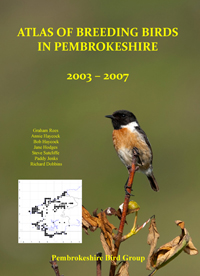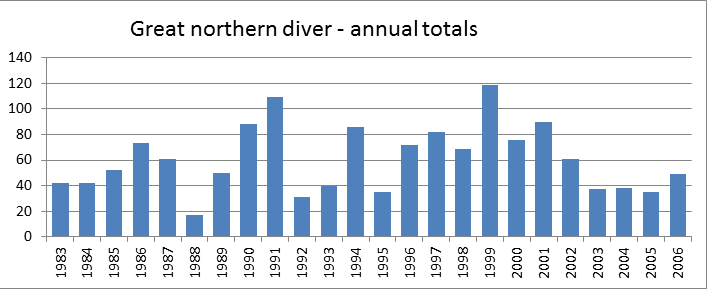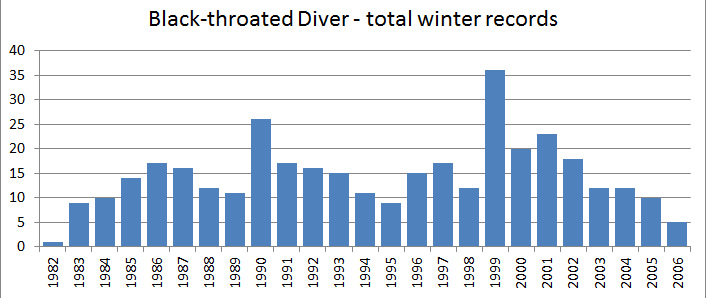Spotted Redshank - status
 Tuesday, December 28, 2010 at 5:43PM
Tuesday, December 28, 2010 at 5:43PM Tringa erythropus
Passage migrant and winter visitor.
The Spotted Redshank breeds across the Arctic area of the Old World, the nearest to Britain being in Fenno - Scandia and western Russia. Birds from this area winter south as far as the Afrotropics.
Mathew (1894) classified the Spotted Redshank as a rare autumn visitor to Pembrokeshire, noting that several had passed through the hands of Mr Tracy the bird-stuffer of Pembroke. All were birds of the year and obtained in the autumn. Additionally three received by the Cardiff Museum in 1896 were from Tenby. Subsequently Lockley et al (1949) noted three more occurrences involving four birds.
BWP states that Spotted Redshanks increased in the UK from the 1950’s, Lovegrove et al (1994) tracing the increase in Wales from the 1960’s. In Pembrokeshire there were records in six years, involving eight birds, during the 1950’s but they were annual from 1960 onwards involving an increased number of birds.
Cumulative monthly totals countywide, 1960 – 2006.

Graham Rees
(Covers records up to and including 2006).
References
CRAMP. S. (Editor), 1977 – 1994. Handbook of the Birds of Europe, the Middle East and North Africa : the birds of the Western Palearctic, Oxford University Press, 9 Vols. (BWP)
MATHEW. M. 1894. The birds of Pembrokeshire and its islands, R. H. Porter.
LOCKLEY. R. M, INGRAM. C. S. and SALMON. H. M.1949. The birds of Pembrokeshire, West Wales Field Society.
LOVEGROVE. R, WILLIAMS . G. & WILLIAMS. I. 1994. Birds in Wales, T & A. D. Poyser Ltd, London.
 GHR,
GHR,  Migrant,
Migrant,  Wader,
Wader,  winter in
winter in  Spotted Redshank
Spotted Redshank 


